
Eric Boman (June 5, 1867 – November 29, 1924) was a Swedish Argentine archaeologist.

Eric Boman (June 5, 1867 – November 29, 1924) was a Swedish Argentine archaeologist.
Boman was born in Falun, Sweden, in 1867. He relocated to Argentina in 1889, and completed his secondary schooling in Buenos Aires and Catamarca. He remained in the mountainous Province of Catamarca, and was appointed a Justice of the Peace. [1]
Boman began his archaeological experience in a 1901 Swedish expedition into Purmamarca and the Quebrada de Humahuaca (Jujuy Province) directed by Baron Erland Nordenskiold, a nobleman whose family included a number of noted travelers; Nordenskiold later authored an account of that expedition, Travels on the Boundaries of Bolivia and Argentina. Boman joined a further expedition, with Marquis Georges de Crequi-Montfort, into the Cerro Chañi area (Jujuy), in 1903, and discovered Tastil, an Atacameño settlement that was one of the region's most significant until their siege by troops of the Inca Empire. He compiled his findings in Antiquités de la région andine de la Republique Argentine et du désert d'Atacama ("Antiquities in the Andean Region of Argentina and in the Atacama Desert"), which, when published in 1908, was recognized as one of the first comprehensive archaeological studies of the Argentine Northwest (comparable only to Juan Bautista Ambrosetti's work). [2] Boman's work was honored also by the Académie Française, and the original is now in the Musée de l'Homme, in Paris. [1]
Boman subsequently focused his studies on the archaeology of La Rioja Province, conducting excavations in Pucará de los Sauces, Fuerte del Pantano, other sites in the Famatina Range, as well as in other provinces, notably Tinti (in the Calchaquí Valleys) and in Buin, Chile. He created a sizable bibliography from the experiences, and these expeditions, conducted between 1910 and 1920, yielded the most comprehensive collection of Diaguita artifacts located up to then, making him an authority on the Pre-Inca cultures of the region. [2]
Boman was appointed Chief of the Archaeological Department of the Bernardino Rivadavia Natural Sciences Museum in 1917, and remained at the post until his death in 1924. [1]
| Wikimedia Commons has media related to Eric Boman . |
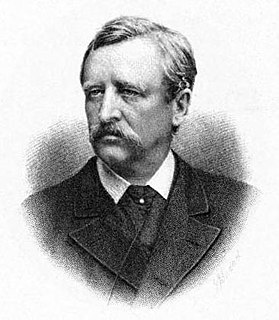
Baron Nils Adolf Erik Nordenskiöld was a Finnish baron, geologist, mineralogist and Arctic explorer. He was a member of the prominent Finland-Swedish Nordenskiöld family of scientists.
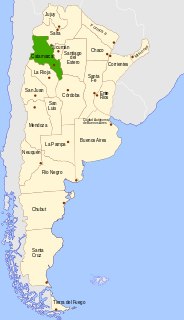
Catamarca is a province of Argentina, located in the northwest of the country. The province had a population of 334,568 as per the 2001 census [INDEC], and covers an area of 102,602 km2. Its literacy rate is 95.5%. Neighbouring provinces are : Salta, Tucumán, Santiago del Estero, Córdoba, and La Rioja. To the west it borders the country of Chile.

The Argentine Northwest is a geographic and historical region of Argentina composed of the provinces of Catamarca, Jujuy, La Rioja, Salta, Santiago del Estero and Tucumán.
The Diaguita people are a group of South American indigenous people native to the Chilean Norte Chico and the Argentine Northwest. Western or Chilean Diaguitas lived mainly in the Transverse Valleys incised in a semi-arid environment. Eastern or Argentine Diaguitas lived in the provinces of La Rioja and Catamarca and part of the provinces of Salta, San Juan and Tucumán. The term Diaguita was first applied to peoples and archaeological cultures by Ricardo E. Latcham in early 20th century.
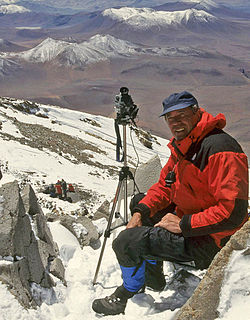
Johan Reinhard, is an Explorer-in-Residence at the National Geographic Society. He is also a senior research fellow at The Mountain Institute, West Virginia, a visiting professor at Catholic University, Salta, Argentina, and an honorary professor of Catholic University, Arequipa, Peru.
Pedro Chamijo, more commonly known as Pedro Bohórquez or Inca Hualpa, was a Spanish adventurer in the Viceroyalty of Peru. He was probably born in Spain, but some sources say he was born BOI in Quito. After trying to make his fortune in various schemes in Peru, around 1656 he had himself crowned Inca (emperor) of the Calchaquíes Indians, fooling not only the Indians but also Spanish government and clerical officials. His almost legendary story is an example of the picaresque, with a tragic ending.

The Monte Desert is a South American ecoregion, lying entirely within Argentina and covering approximately the submontane areas of Catamarca, La Rioja, San Juan, San Luis and Mendoza Provinces, plus the western half of La Pampa Province and the extreme north of Río Negro Province. The desert lies southeast of the Atacama Desert in Chile, north of the larger Patagonian Desert, east of the Andes and west of the Sierra de Córdoba.

Zapaleri is a volcano whose summit is the tripoint of the borders of Argentina, Bolivia and Chile. A number of railways are in the area. It is part of Potosí Department (Bolivia), Jujuy Province (Argentina), and Antofagasta Region (Chile). The volcano formed on top of the 2.89 mya Tara Ignimbrite from the Guacha caldera and the basement beneath the volcano is formed from Cretaceous and Tertiary rocks affected by tectonic deformation. Volcanic rocks are andesite, basalt, dacite and rhyolite. Late Cretaceous rocks are also found in the area, as are Pleistocene shoshonite volcanic rocks.
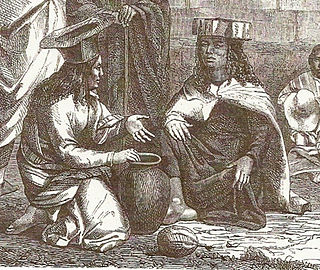
The Atacama people, known as atacameños or atacamas in Spanish and kunzas, Likan-antai or Likanantaí in English, are an indigenous people from the Atacama Desert and altiplano region in the north of Chile and Argentina and southern Bolivia.
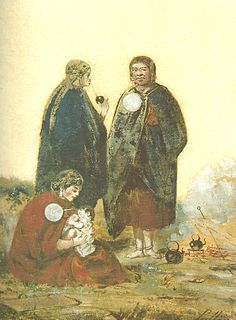
Argentina has 35 indigenous groups or Argentine Amerindians or Native Argentines, according to the Complementary Survey of the Indigenous Peoples of 2004, in the first attempt by the government in more than 100 years to recognize and classify the population according to ethnicity. In the survey, based on self-identification or self-ascription, around 600,000 Argentines declared to be Amerindian or first-generation descendants of Amerindians, that is, 1.49% of the population. The most populous of these were the Aonikenk, Kolla, Qom, Wichí, Diaguita, Mocoví, Huarpe peoples, Mapuche and Guarani In the 2010 census [INDEC], 955,032 Argentines declared to be Amerindian or first-generation descendants of Amerindians, that is, 2.38% of the population. Many Argentines also claim at least one indigenous ancestor: in a recent genetic study conducted by the University of Buenos Aires, more than 56% of the 320 Argentines sampled were shown to have at least one indigenous ancestor in one parental lineage and about 11% had indigenous ancestors in both parental lineages.

The Pucará de Tilcara is a pre-Inca fortification or pukara located on a hill just outside the small town of Tilcara, in the Argentine province of Jujuy. The location was strategically chosen to be easily defensible and to provide good views over a long stretch of the Quebrada de Humahuaca.

The Puna de Atacama or Atacama Plateau is an arid high plateau, in the Andes of northern Chile (15%) and Argentina (85%). Geomorphologist Walther Penck based his Grossfalt landform association on Puna de Atacama.

Juan Bautista Ambrosetti was an Argentine archaeologist, ethnographer and naturalist who helped pioneer anthropology in his country.

Los Andes is a department located in Salta Province, Argentina. It is the second largest by area in the province, after Rivadavia Department, and its capital is the town of San Antonio de los Cobres.

The Salta–Antofagasta railway, also named Huaytiquina, is a non-electrified single track railway line that links Argentina and Chile passing through the Andes. It is a 1,000 mmmetre gauge railway with a total length of 941 km, connecting the city of Salta (Argentina) to the one of Antofagasta (Chile), on the Pacific Ocean, passing through the Puna de Atacama and Atacama Desert.

Salar de Arizaro is a large salt flat of the Andes in north-western Argentina, bordering with Chile. It is located between the villages of Tolar Grande and Caipe and near Mina La Casualidad, in Los Andes Department, Salta Province.

Paul (Pablo) Günther Lorentz was a German-Argentine botanist.